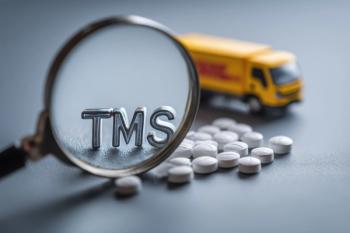
- Vol 39, Issue 5
Normal Life Stress, They Say…
Recovery from addiction does not protect against normal life events...
TALES FROM THE CLINC
In this installment of Tales From The Clinic: The Art of Psychiatry, we follow the story of a young man who turned his life around for the sake of his spouse and child, but nevertheless struggled with the tribulations of normal upheaval. Recovery from
Case Study
“Mr Wallace” is a young man with opioid use disorder and major depressive disorder. He lost contact with his wife and young child as a consequence of his
Models of Addiction
The National Institute on Drug Abuse (NIDA) defines addiction as “a chronic, relapsing brain disease that is characterized by compulsive drug seeking and use, despite harmful consequences. It is considered a brain disease because drugs change the brain—they change its structure and how it works. These brain changes can be long lasting, and can lead to the harmful behaviors seen in people who abuse drugs.”1 Although NIDA adheres to the brain disease model of addiction (
Advancements in neuroscience have made it possible to identify strong genetic, neurodevelopmental, and sociocultural components of addiction. Evidence pointing to the activation of reinforcement circuits (
This biological approach, supported by animal models of addiction,3 has made room for pharmaceutical treatments of
Critics of the purely brain disease model of addiction believe that categorizing substance use as a disease may further stigmatize individuals with addiction and prevent them from developing self-control, all while damaging their self-esteem.5 They point out that disease itself has
Opponents of the brain disease model of addiction believe it: is insufficiently supported by animal-model and neuroimaging data; has only a modest impact on public policies toward drugs and addiction; and has not majorly contributed to the development of more effective treatments despite the decades of research.8 Evidence to support environmental approaches to reducing substance use cautions strongly against the possibility of policy makers and government officials being enticed by the allure of
Proponents of the brain disease model of addiction postulate that adherence will encourage seeking of evidence-based medical assistance to overcome a brain disease. They believe this model lends itself to a collaborative approach between patients and physicians against addiction. However, critics believe the brain disease model of addiction lends itself to addicted individuals absolving themselves of personal responsibility. This results in infantilizing individuals with addictions while shifting the responsibility of overcoming addiction to medical professionals.4 This stark difference in how each model contributes to the physician-patient relationship sheds light on the topic of countertransference (
Countertransference
Mr Wallace later found out—after buying the house, buying a car, and moving back in with his wife and child—that his wife had not been faithful. This led to significant use of Adderall by Mr Wallace and ongoing relationship issues. He continues to have interpersonal issues in the relationship and struggles with maintaining the relationship for the sake of keeping access to his daughter.
As in all cases of
These lead to beliefs about who claims responsibility for beginning and overcoming
From studies on treatment providers’ views on the brain disease model of addiction, there seems to be overall support for this concept, although with variations noted among different professions of providers. The strongest support was generally seen in psychiatrists, especially those who were older.9 Interestingly, there was significant evidence of an amalgamation of beliefs, with providers expressing support for multiple models and levels of patient responsibility. These findings extended from treatment providers to treatment settings as well, with examples provided of substance as a “self-induced disease,” bringing together the requirement for medical treatment with responsibility for the initiation and resolution of use belonging to the individual.9 This appears to reflect the complexity of
How a physician conceptualizes substance use plays a role in the countertransference experienced. Thinking a patient is willfully making bad choices will obviously decrease positive feelings or wanting to help them, or to go the extra mile in treatment planning. On the other hand, approaching substance use from the brain disease model of addiction helps patients overcome stigma and reduce guilt, as use is not conceptualized as a moral failure of the patient. This may help reduce negative countertransference toward patients with substance use by assisting in understanding frustrating, demanding, or confrontational behavior as not intentional or specifically directed at the provider. Negative countertransference could result in direct consequences, such as avoidance of the patient, difficulty with empathetic responses, and sessions cut short.10
This could also increase protective or parental feelings toward patients, especially if they are viewed as helpless against the structural and chemical factors that contribute to their use.10 Such a “positive” countertransference can also lead to difficulty in the therapeutic relationship, as the clinician may take on the role of a parent, becoming overly engaged, protective, and permissive. If the patient then regresses and begins to act out or relapses, the clinician may feel betrayed and subsequently have difficulty in future encounters with the patient. A parental countertransference may also result in the clinician infantilizing the patient and minimizing their strengths and abilities.10 As with all forms of countertransference, the ability to identify and label the ensuing emotion is as critical as the adjustments the clinician must accordingly make.
Treatment
Although there are many frequently underutilized medications for substance use disorder, a mainstay of treatment relies on naturalistic options such as Alcoholics Anonymous, Narcotics Anonymous, inpatient and outpatient rehabilitation programs, and similar offerings. The Anonymous groups generally involve a 12-step approach that includes concepts of acknowledging addiction as well as the difficulty in overcoming it, recognizing wrongs, making amends for those shortcomings, committing to a life with continued focus on sustained abstinence, and working to help others, especially those experiencing similar struggles with substance use (
Historically, and continuing in the present day, these programs tend to have a strong spiritual component to them, which can be off-putting for some individuals and make it harder to engage. Of the limited data available, there is evidence for the beneficial effect of involvement in 12-step programs for maintaining sobriety, both with and without attending a rehabilitation program. The impact seems to be strongest for those who started attending 12-step groups prior to entering a rehabilitation program and who continued to be involved after completion of rehabilitation. Most of the available evidence is in regard to alcohol use, with less data focused on other substances.
Concluding Thoughts
Medicine is far from the conceptualization of addiction as a sin, yet the belief in biological models still lags considerably, as evidenced by suboptimal prescribing of anti-craving medications. In general, evidence-based practices for addiction treatment are still not fully implemented at the scale they could be, and this is likely reflective of how addictive diseases are conceptualized in everyday practice.
Dr Aldrich is a psychiatry resident at Baylor College of Medicine. Dr Hanif is a PGY 3 general psychiatry resident at Menninger Department of Psychiatry and Behavioral Sciences at the Baylor College of Medicine in Houston, Texas. She plans to pursue a fellowship in forensic psychiatry after graduation. Dr Parks is an addiction psychiatrist at Baylor College of Medicine and the director of the Consult Liaison Psychiatry service at the Ben Taub General Hospital- Harris Health System in Houston, Texas.
References
1. National Institute on Drug Abuse; National Institutes of Health. Drugs, brains, and behavior: the science of addiction. 2007. Accessed March 15, 2022.
2. Becoña E.
3. Ahmed SH.
4. Racine E, Sattler S, Escande A.
5. Frank LE, Nagel SK.
6. Harackiewicz JM, Sansone C, Blair LW, et al.
7. Heyman G. Addiction: A Disorder of Choice. Harvard University Press; 2009.
8. Hall WD, Carter A, Forlini C.
9. Barnett AI, Hall W, Fry CL, et al.
10. Imhof J, Hirsch R, Terenzi RE.
11. Thomas S, Monico N. The 12 steps of Alcoholics Anonymous. American Addiction Centers. Updated December 20, 2021. Accessed March 15, 2022.
Articles in this issue
over 3 years ago
Dual Diagnosis: Double the Stigma, Double the Troubleover 3 years ago
Cannabis Legalization: What Psychiatrists Need to Knowover 3 years ago
Nonabstinent Recovery From Alcohol Use Disorderover 3 years ago
Substance Misuse in College Studentsover 3 years ago
Neurodiversity and the Social Ecology of Disabilityover 3 years ago
Prolonged Grief Disorder: The Derailed Grief Processover 3 years ago
Medicine Beyond the Binaryover 3 years ago
The Face of Courage and Leadershipover 3 years ago
Astonished by How Much There Still Is to Learn and DoNewsletter
Receive trusted psychiatric news, expert analysis, and clinical insights — subscribe today to support your practice and your patients.














